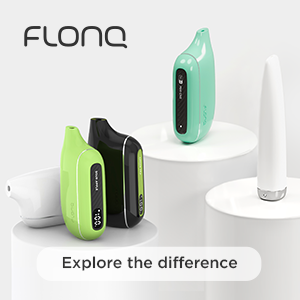It’s no secret that vape devices have become more complex and fully-featured over the years. One feature that has become more ubiquitous recently is temperature control, which advanced users have been tinkering with for quite some time.
So, what purpose does this feature serve?
‘Dry hit’ can be very frustrating. This happens when a coil is heated without proper saturation, resulting in singed cotton, a burning sensation and unpleasant, acrid vapour output.
Temperature control aims to entirely avoid this by detecting dry coils.
Manufacturers have managed to make temperature control fairly easy going for the average user.
This all began in early 2015 with the release of Evolv’s DNA40 chipset. This was the very first board to offer temperature control and for some users a whole new style of vaping was discovered.
The principles of early temperature control are quite simple.
While standard kanthal coils maintain a stable resistance irrespective of (typical vaping) temperature, other materials do not. Coils made from Ni200, Titanium and stainless-steel all fluctuate in resistance when they heat up.
With the right data, this allows a chip to tell when a coil reaches a temperature that indicates a lack of e-liquid. When properly set up, temperature control makes dry hits a thing of the past.
Many competitors have emerged since the birth of the DNA40 and now most manufacturers offer TC devices, though accuracy varies wildly between brand and model.
These days, Yihi, Evolv and Dicodes boards are considered to be at the top of the pile in terms of reliability and accuracy, and though devices featuring these chips tend to come with a higher price tag, the longevity and after-purchase support provided by these companies is worth the cost to many users.
The following summary should help you find the ideal TC chipset for your needs:
New Users: DNA75C/DNA250C
DNA’s chips arguably remain most popular in high-end vaping. As with previous iterations, the C series utilised Evolv’s eScribe software for an infinitely adjustable experience.
The new Replay feature simplifies temperature control for new users, too. This allows you to ‘record’ a firing cycle of your device and then repeat it on demand so you’ll never need to lock your resistance or fiddle with temperature settings.
This is a comprehensive but user-friendly choice which should be ideal for most TC users and a wide variety of manufacturers have DNA devices on offer.
Experienced Users: Yihi SX550J/485J

Yihi SXmini were one of the first companies to directly compete with Evolv’s temperature control and have mastered the technology in their newer models.
Typically, the top-end Yihi chips are only found in their own SXmini devices, but that’s a feature rather than a bug. This means you can always expect top-tier device build-quality to pair with your super accurate chipset.
The Yihi boards are slightly less user-friendly than Evolv’s counterparts, however, so these devices are more suited to experienced vapers.
Aficionados: Dicodes

German-made Dicodes devices are the cutting edge of vaping technology. With a team of engineers who previously created products for the medical industry, it’s no surprise that Dicodes prides itself on absolute precision.
Hardcore TC users often herald these products as being unmatched for accuracy, efficiency and battery life, but this comes with a very substantial price tag and limited availability.
Dicodes chips also have a bit of a learning curve, so these devices are reserved for only the most dedicated temperature control enthusiasts.








